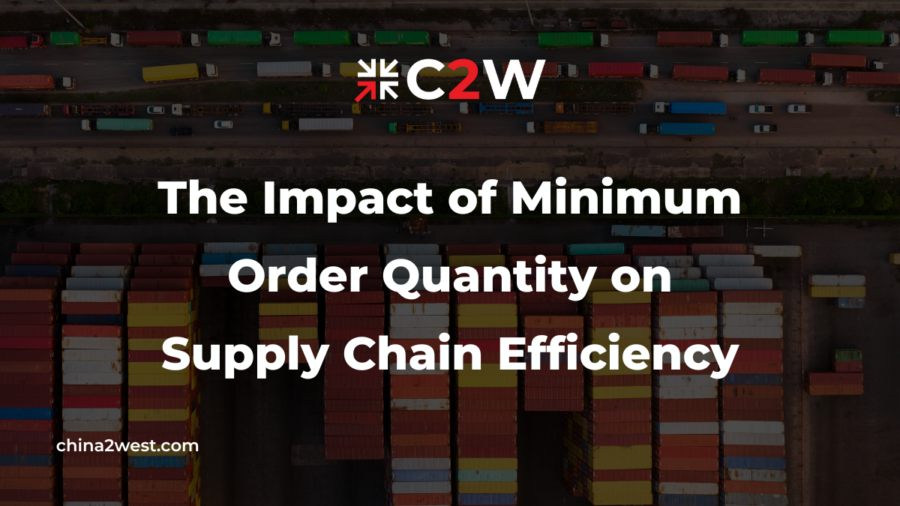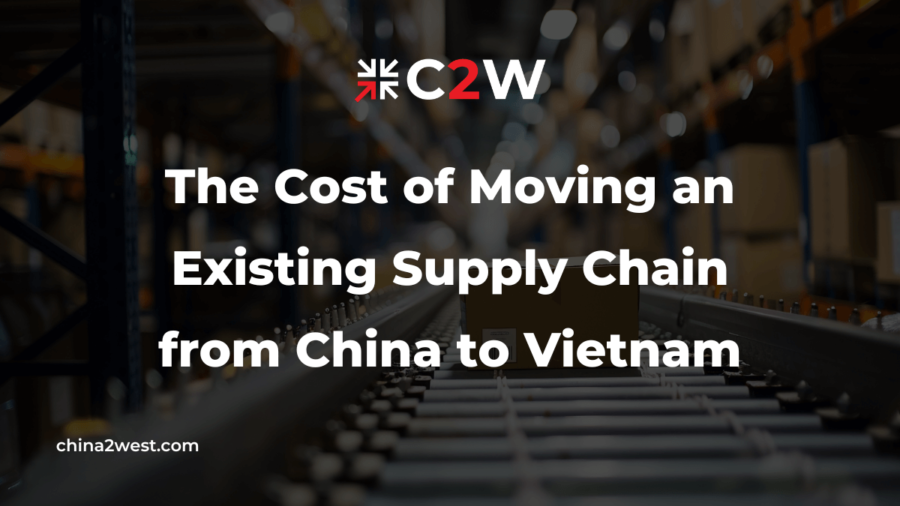In the intricate dance of supply chain management, every step, every decision, and every strategy play a pivotal role in determining the efficiency and success of a business. Among these, the concept of MOQ often emerges as a critical factor, yet it is one that is frequently overlooked or misunderstood. This concept is a crucial element in supply chain management that can significantly impact the efficiency and overall performance of a business. Understanding the role of MOQs and how to optimize them is essential for businesses looking to streamline their operations and drive success in today’s competitive market. Read on to learn more.
What is Minimum Order Quantity (MOQ)?
Minimum Order Quantity (MOQ) refers to the smallest amount or number of units that a supplier is willing to sell at one time. It’s a common term used in manufacturing and supply chain management.
For example, if a supplier sets an MOQ of 100 units for a particular product, it means that you must purchase at least 100 units of that product in a single order. Buying less than the MOQ is usually not allowed, or it might involve additional costs or special arrangements.
MOQs can vary widely depending on the product, the industry, and the specific supplier. They are particularly relevant when dealing with manufacturers or wholesalers, especially those who produce or deal in bulk items.
What Determines a Supplier’s MOQ?
The Minimum Order Quantity (MOQ) established by a supplier is a critical aspect that reflects various underlying factors. By comprehending these elements, businesses can make informed decisions, negotiate more effectively, and select suppliers that best meet their operational requirements. The primary factors influencing a supplier’s MOQ include:
Production Costs
The MOQ is often directly proportional to the production costs involved. High setup costs for machinery, labor, and the manufacturing process itself necessitate larger orders for the supplier to achieve a profitable production run. This is particularly true for complex or high-tech products where the initial setup requires significant investment.
Raw Material Acquisition
The procurement strategies for raw materials significantly impact MOQs. Suppliers who buy raw materials in large quantities often set higher MOQs to justify bulk purchases and reduce waste. On the other hand, if a supplier has access to materials that can be purchased in smaller batches or if the materials are widely available, they might be more flexible, resulting in lower MOQs.
Storage and Handling
Products that are bulky, have a limited shelf life, or need special storage (like refrigeration or climate control) can influence a supplier to set higher MOQs. This is to ensure a quicker turnover of stock, thereby reducing the risks and costs associated with long-term storage.
Customization Level
The degree of customization has a direct impact on MOQ. Highly customized orders, such as those requiring unique designs, specific materials, or brand-specific modifications, typically lead to higher MOQs. This is because such customizations involve additional planning, resources, and sometimes unique setup processes, which are cost-effective only at larger scales.
Economies of Scale
Suppliers are often driven by the desire to maximize production efficiency and reduce the per-unit cost. By setting higher MOQs, they can produce in larger batches, which lowers the cost per unit due to economies of scale. This is beneficial for both the supplier and the buyer, as it can lead to lower prices for larger orders.
Supplier’s Size and Capacity
The scale and capacity of a supplier play a significant role in determining MOQs. Larger suppliers, with extensive resources and higher production capabilities, often target big clients and thus set higher MOQs. Conversely, smaller suppliers or those focusing on niche markets might offer more flexible, lower MOQs to cater to small businesses or specialized demands.
Industry Standards
MOQs can also be influenced by established norms within specific industries. Certain sectors, due to the nature of their products or market expectations, have standard MOQs. For instance, the MOQs in the fashion and textile industry might differ significantly from those in electronics or heavy machinery, reflecting the unique production and market dynamics of each sector.
The Role of Minimum Order Quantity in Supply Chains
The strategic placement of MOQs within supply chains embodies a dual-purpose tool. On one hand, it aids suppliers in mitigating the risk of overproduction and holding excessive inventory, which can be particularly detrimental in industries with rapid product life cycles or high storage costs. On the other hand, it prompts businesses to carefully plan their procurement strategies, ensuring that orders align with demand forecasts and storage capacities. This careful calibration between production, procurement, and sales is essential for maintaining a lean and agile supply chain, capable of responding swiftly to market dynamics while minimizing waste and redundancy.
Strategies for Managing MOQs
Managing MOQs effectively is crucial for businesses, especially for small and medium-sized enterprises (SMEs) that may not have the capacity or need to order large quantities of products at once. Here are four strategies to effectively manage MOQs:
Negotiation with Suppliers
Businesses can often negotiate MOQs with suppliers, especially when they have a strong relationship or when they can commit to regular orders. Effective negotiation can result in a win-win situation where the supplier maintains profitability while the buyer benefits from lower MOQs.
Consolidation of Suppliers
By consolidating purchases with fewer suppliers, businesses can increase their ordering power. This can lead to better negotiation leverage for lower MOQs and better pricing.
Inventory Forecasting and Planning
Accurate forecasting and inventory planning can help businesses order more strategically. Understanding market trends and customer demands allows for smarter ordering, aligning closer with MOQs without overstocking.
Exploring Alternative Suppliers
Sometimes, finding suppliers who offer lower MOQs, possibly at a slightly higher unit cost, can be more beneficial for maintaining cash flow and reducing inventory risks.
Reaching Out to A Reliable Supplier in China
Understanding and effectively managing MOQ when working with a Chinese supplier is a critical aspect of supply chain management. By comprehensively analyzing the factors that influence MOQs and employing strategic approaches to manage them, you can optimize your supply chains, reduce costs, and maintain a competitive edge in the market. However, navigating the complexities of the Chinese market can be challenging, especially for businesses unfamiliar with the local market dynamics and cultural nuances. This is where our expertise comes into play. We offer customized solutions that cater to your unique business needs. If you are seeking a more comprehensive solution to optimize your product sourcing and manufacturing, contact us today to explore how our tailored solutions can meet your specific needs and drive successful results.




